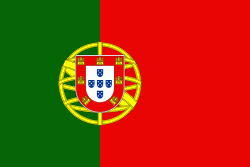Seixal Municipality (Seixal)
 |
 |
The present Mayor is Joaquim Santos, elected by the Unitary Democratic Coalition since September 2013.
The toponymy Seixal comes from a type of smooth stone (seixo) that is found in rivers; the name evolving from the name used to describe the geomorphology of the region.
Since the Roman era, the Tagus bay has been a region of human settlement, from many of the archaeological discoveries at Quinta do Rouxinol, in Corroios, and Quinta de S. João, in Arrentela (beginning in the period of the Portuguese Age of Discovery). A land of fishermen and signeurial holdings, the municipality of Seixal evolved over the centuries, always with the connection to the river. It was across the Tagus that many of the region's products (fishe, cereals, salt, olive oil, wine and fruits) were exported to the regional capital.
In the 15th century, due to its prime location, various dockyards and shipbuilders began constructing river boats and trans-Atlantic ships. At the same time, the tides of the region were used to develop mills, such as the tidal mill in Corroios in 1403, fostering various the millers, caulkers and carpenters along the river. It was in Seixal that the brothers Vasco da Gama and Paulo da Gama built vessels for the trip to India. While Vasco da Gama was in Lisbon to prepare the trip, Paulo da Gama commanded carpenters and caulkers in the construction of the ships. Estevão da Gama, the father of the brothers, was commander of Seixal. The construction of the ships was the beginning of what is known as the Portuguese Discoveries. The settlement at this time was actually a part of the parish of Arrentela, then a division of Almada.
At the beginning of the 16th century, the population of the territory numbers three dozen homes, and by the 18th century there was a population of 400 inhabitants.
After the Liberal revolution, during the administrative reforms of 1836, during the reign of Queen Maria II of Portugal, Seixal obtained the status of municipality. A few years later (1895), this status, was extinguished. At that time Amora was integrated into the municipality of Almada, while Arrentela, Aldeia de Paio Pires and Seixal was annexed into the municipality of Barreiro. Yet, three years later the municipality of Seixal was newly instituted.
As a consequence, by the 18th century, the municipality became an aristocratic retreat for the nobility in nearby Lisbon, resulting in the construction several vacation properties or villas, such as Quinta da Fidalga, Quinta do Alamo, Quinta da Trindade, Quinta de São Pedro and Quinta de Cheiraventos.
Around the bay there are several factories that were important in the development of the municipality, such as the Fábrica de Vidros da Amora (Amora Glass Factory, the Companhia de Lanifícios da Arrentela (Arrentela Wool Co.), the Mundet Cork Factory in Seixal; and the cod drying buildings on the Ponta dos Corvos. These early factory installations transformed the municipality from a rural outpost into an industrial centre, eventually resulting in the installation of the steelmaker Siderurgia Nacional in 1961.
In 1966, a bridge was inaugurated over the Tagus providing a direct, stable link to Lisbon.
Map - Seixal Municipality (Seixal)
Map
Country - Portugal
 |
 |
| Flag of Portugal | |
One of the oldest countries in Europe, its territory has been continuously settled, invaded and fought over since prehistoric times. The territory was first inhabited by pre-Roman and Celtic peoples who had contact with Phoenicians, ancient Greeks and Carthaginians. It was later ruled by the Romans, followed by the invasions of Germanic peoples and the Islamic invasion by the Moors, whose rule was eventually expelled during the Reconquista. Founded first as a county of the Kingdom of León in 868, gained its independence as the Kingdom of Portugal with the Treaty of Zamora in 1143.
Currency / Language
| ISO | Currency | Symbol | Significant figures |
|---|---|---|---|
| EUR | Euro | € | 2 |
| ISO | Language |
|---|---|
| PT | Portuguese language |

















